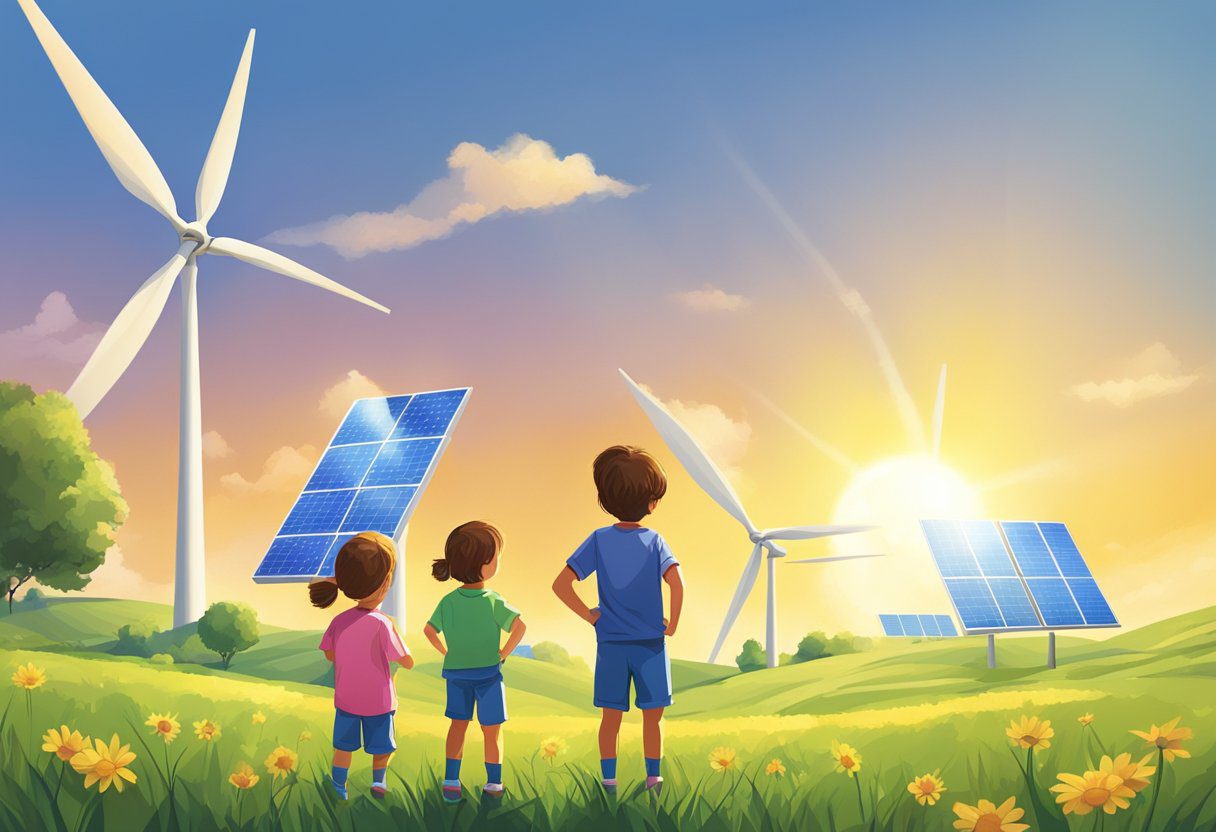Educating kids on green energy does not necessarily need to be a tedious science lesson. Actually, some of the best learning occurs even when children aren’t aware they are learning. As parents and teachers, there are unlimited ways in which we can incorporate sustainability into our daily life in a manner that is natural, thrilling, and even enjoyable.
The attractiveness of this idea of embracing green energy early stems from the fact that children have an innate curiosity to understand how things are done. They want to understand why the sun is hot, the origin of electricity, and why we should take care of the earth. We shall look into some real-life activities that are interesting and can be used to make children appreciate renewable energy.
Begin With Practical Solar Experiments
There is no better lesson than practice, and experiments with solar energy are some of the most accessible to children. You can begin simply—by taking a magnifying-glass, focusing the sunlight, and seeing how powerful it is. Move to solar-powered toys that move when exposed to the sun so that children can make the direct correlation between sunlight and energy.
Another excellent practical task is solar cooking. With the help of a pizza box, some aluminum foil, and plastic wrap, it is possible to create a simple solar oven and spend the afternoon using it, with a final result of melted s’mores. Children have the opportunity to observe directly the mechanism of collecting the energy of the sun and turning it into heat to cook. It is science, engineering, and a delicious snack.
For families willing to go a notch higher, installing solar panels provides constant learning. By doing so, they can demonstrate to kids that green energy isn’t just an experiment but can also power real homes. Children adore the panels because they can keep a record of how much energy is generated and see the numbers change over the day.
Transform Transportation into a Teaching Moment
One of the spheres in which green energy ideas can be made clear to children is transportation. They observe cars, buses, and trains on a daily basis, and it is the right point of entry when it comes to discourse on energy sources and environmental impact.
Electric vehicles provide a good learning experience. A lot of children are amazed by the silence of electric cars in contrast to cars powered by gasoline. Explain how these cars do not burn gasoline, but rather use batteries that are electrically charged—and this electricity can come from renewable sources such as solar or wind energy. Children can also see electric vehicle stations, which makes the technology seem real and present in some communities.
In the case of younger children, children’s electric cars give green transport a personal, exciting status. These are ride-on toys with rechargeable batteries and this gives us a great platform to talk about how we can make things work without using gasoline. Children learn that their entertaining toy operates on stored electricity, as large-scale electric vehicles do.
Green energy can be referenced even in the discussion of boats. Although traditional boats use diesel or gasoline, it is better to mention innovations in electric and hybrid commercial boats to make children realize that the transition to renewable energy is occurring with all means of transport, not just cars.
Challenge: Develop a Home Energy Detector
Children like games and challenges, so it is better to make energy consciousness a detective mission. Make your child the “Energy Detective” for a week. Their task is to identify the areas of energy consumption in your family and see potentially available opportunities to consume less energy or turn to renewable resources.
Assign them a notebook on which they can make their observations: lights kept on in empty rooms, appliances left on standby, or windows open with the heating on. The exercise creates awareness and the kids feel empowered and responsible. They do not merely learn about energy; they are also helping their family use it more wisely.
Go a step further and describe what makes various objects in your house work. What might be able to operate on solar power? What about wind energy? Is it possible to have a small solar panel that can charge your phone? These are the questions that make us start thinking critically about the way we use energy and the origin of energy.
Learn by Playing With Wind Energy
Wind energy is easily accessible to children since they can see and experience wind on a daily basis. Begin with simple pinwheels and explain how wind causes them to spin. Discuss how giant wind turbines operate on the same principle: wind spins the blades, producing electricity.
If you are close to a wind farm, go on a field trip and get a closer look at the turbines. The size of these structures amazes most children. Other wind farms have visitor centers or tours with interactive exhibits for kids.
For a home project, you could make a small wind turbine model. One can purchase kits which allow children to create a functioning miniature-sized turbine which actually produces a small amount of electricity—enough to power an LED or charge a capacitor. When their creation begins to generate actual power, the concept comes together in a way that a textbook fails to achieve.
Connect Green Energy to Nature
Educate kids to realize that green power is not about fighting nature, but about working with it. Go outside and talk about the energy everywhere you see: the sun on your face, the wind whistling through the leaves, the flowing streams that could run water-mills.
Garden together and explain how the sun provides the energy that plants require to grow, which we then use as food. It provides a more complete image of energy as a flow within a system, not merely energy that has come out of a power outlet.
Go to natural history museums or science centers with exhibits on renewable energy. Most of them have interactive screens, where children can pedal bikes to produce electricity, or use hand cranks to turn on lights, linking effort and energy production to the most concrete things possible.
Turn It into a Part of Everyday Life
Probably the most effective way to introduce green energy is just the simple act of discussing it every now and then. When you switch on a light, say that maybe the power is solar or wind power. On a sunny day, comment on how well solar panels would work. On a windy day, observe that wind turbines would likely be producing a large amount of electricity.
These small, regular references make renewable energy a normal part of your child’s reality. It is not something exotic and complex, but merely how the world operates, or at least, how it is increasingly operating.
Wrapping Up
Exposing kids to the concept of green energy does not require complex machinery or technical understanding. One only needs innovation, passion, and a readiness to discover together. Whether you are making solar ovens, playing with electric toys, or just pointing out wind turbines on a drive, you are sowing the seeds that will help children to realize their place in a sustainable future.
It is not about making every child an environmental scientist, although there is clearly a shortage of them in the field! It is about creating a generation that considers renewable energy something normal, practical, and accessible. It does not have to be very expensive; just make it fun and observe how your children will fall in love with the clean energy that will be the future of their generation.
Which green energy activities did you find successful with the kids in your life? Write your experiences in the comments below!





























